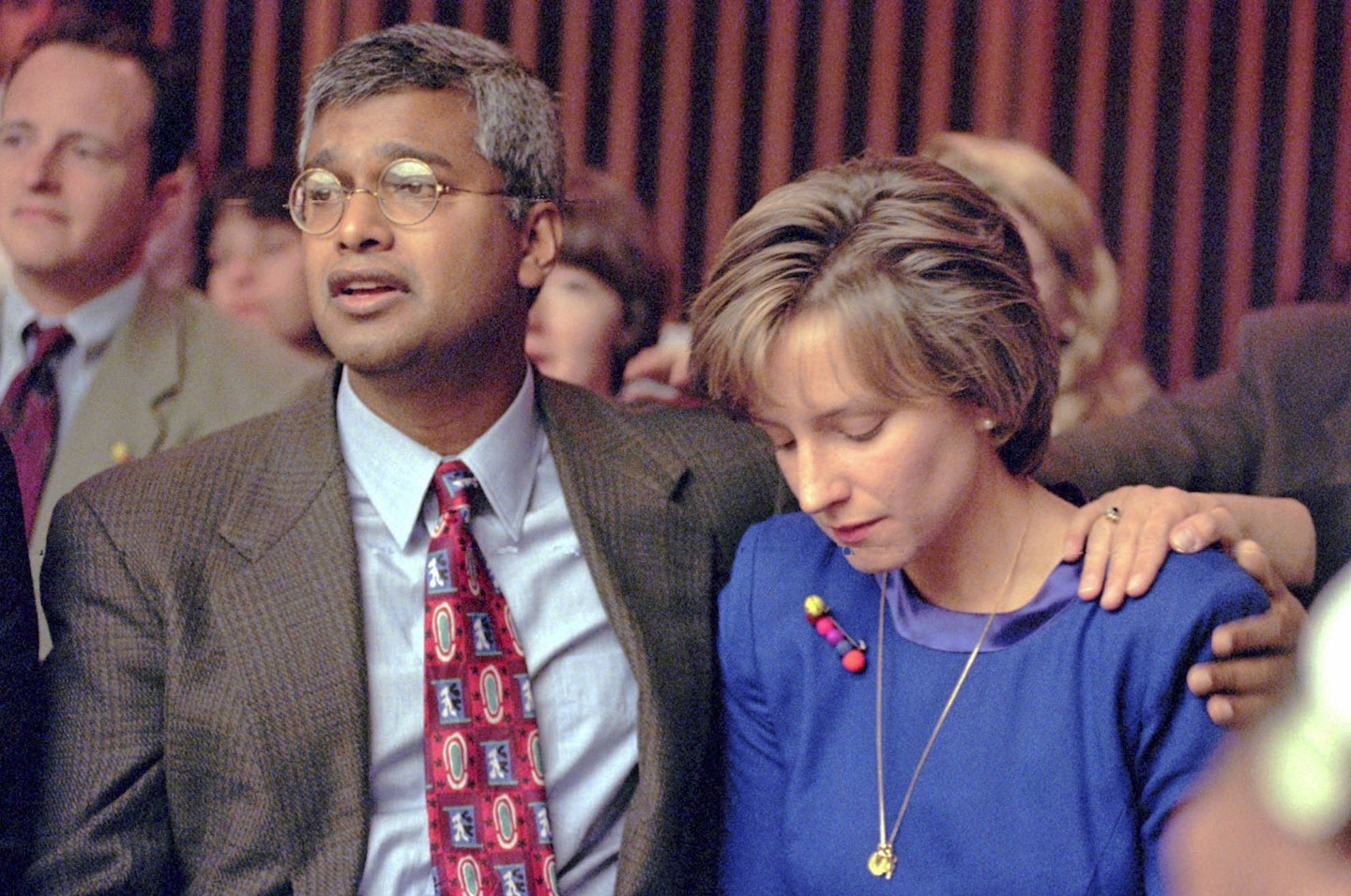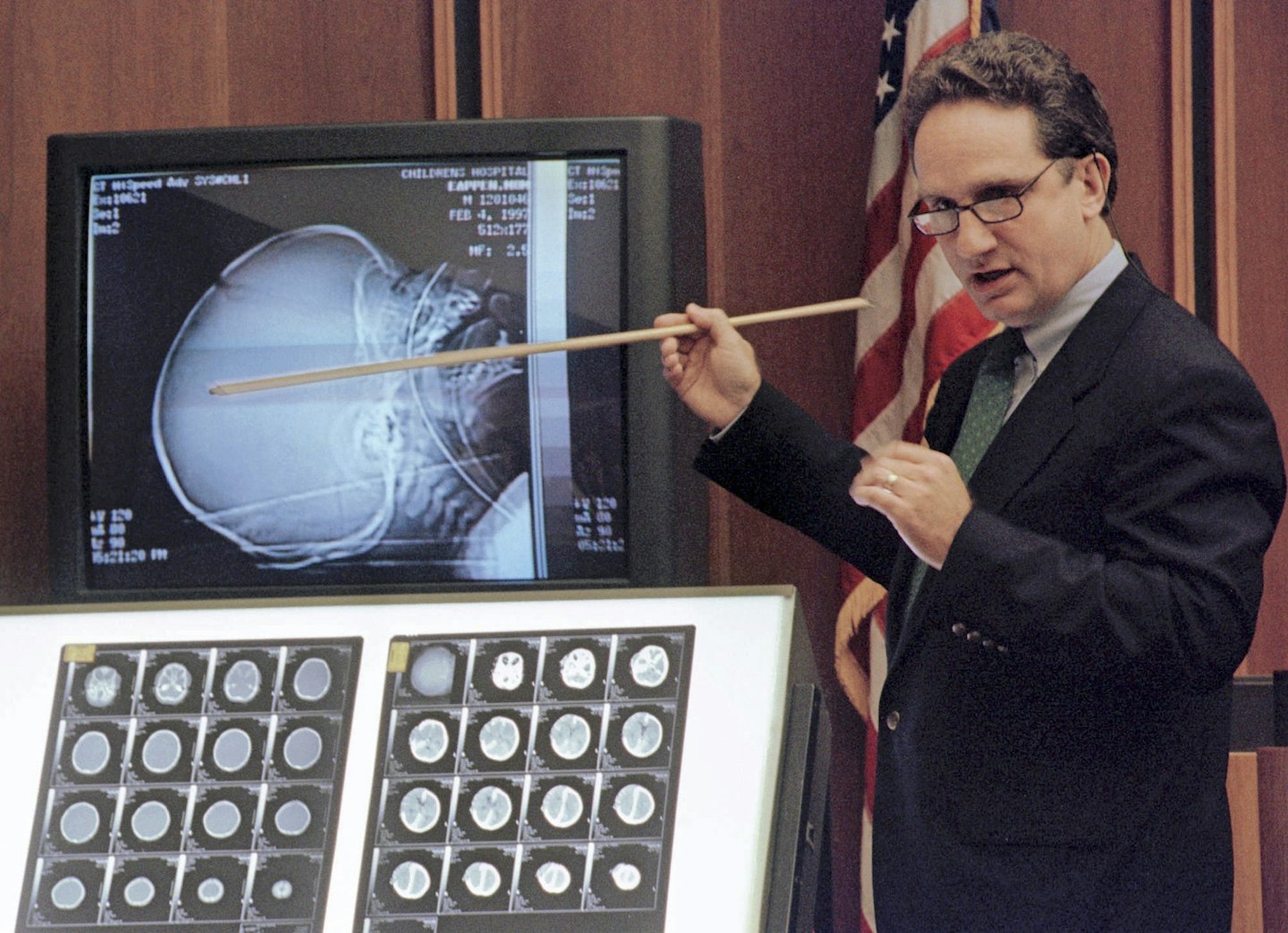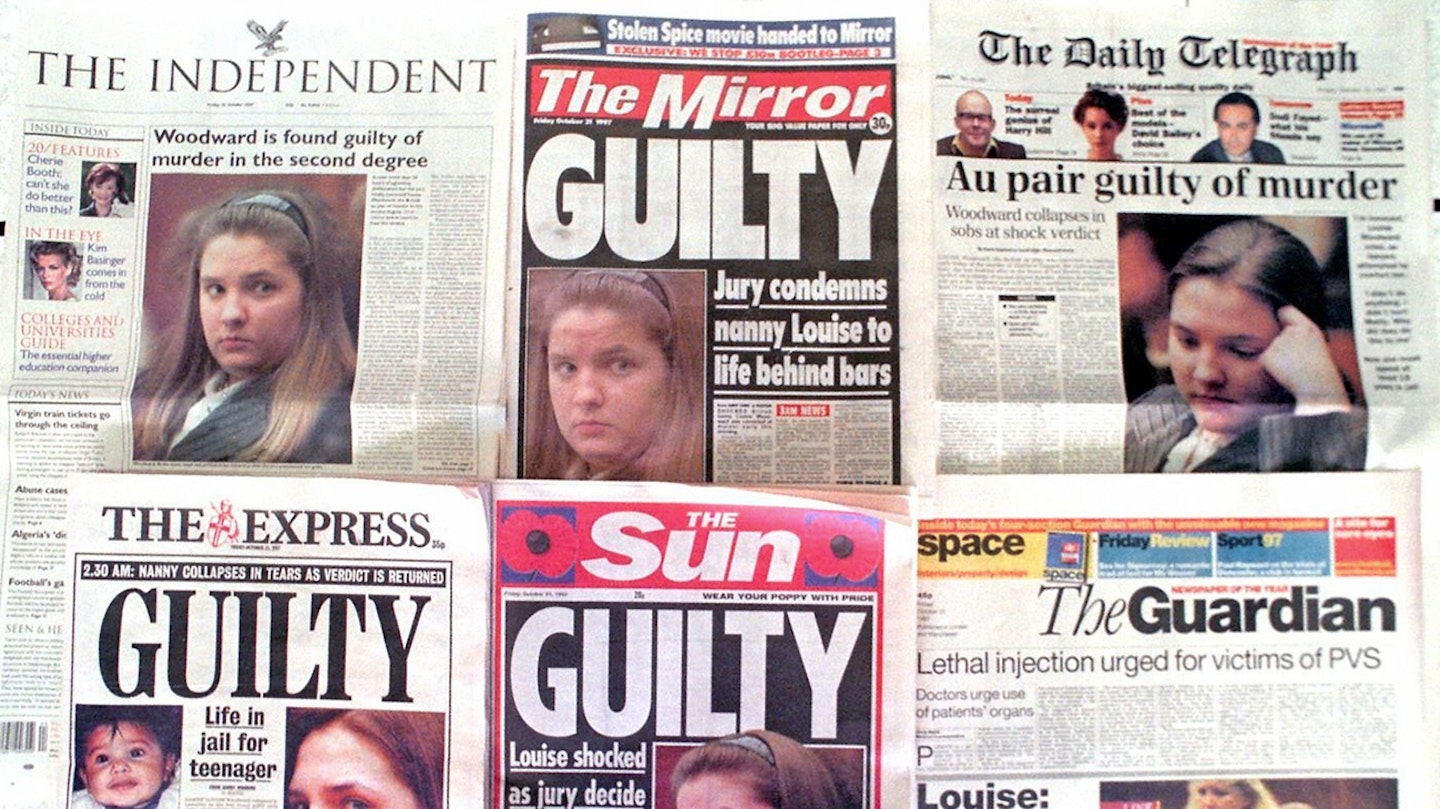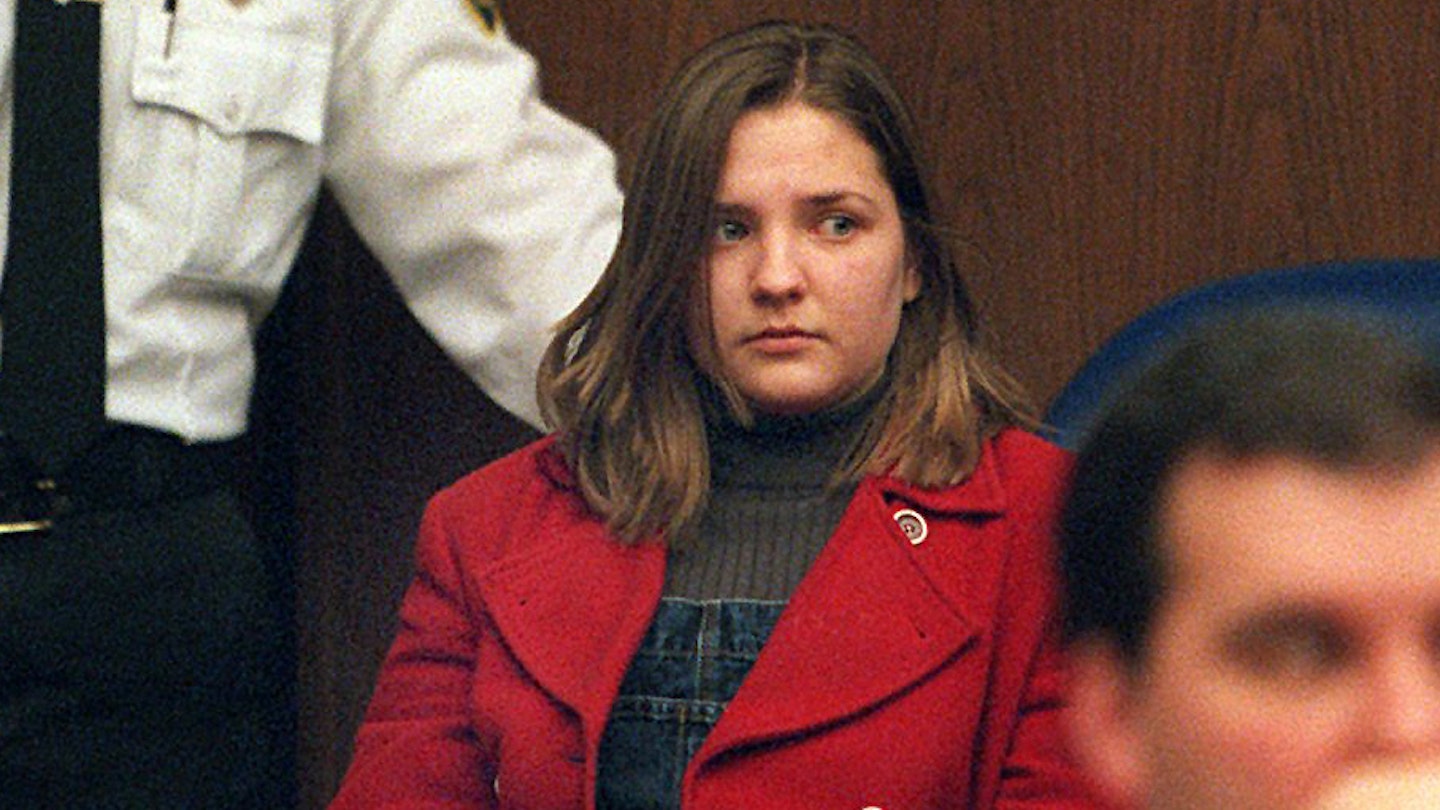When 18-year-old nanny Louise Woodward was accused of violently shaking a baby to death, the case gripped the public on both sides of the Atlantic.
The teenager, from Cheshire, was working as an au pair in Boston, USA, caring for eight-month-old Matthew Eappen when she was accused of inflicting horrific brain injuries which left him on a life-support machine.
When Matthew heartbreakingly died in February 1997, Louise was found guilty of second-degree murder but much to the anger of the prosecution, on appeal, her charge was reduced to involuntary manslaughter and she was released, having served just 279 days in jail.
Now a new three-part documentary airing this week re-examines the case. Featuring in the programme is neurologist Dr Patrick Barnes, who gave vital evidence that helped convict Louise – but has since said he could be wrong and couldn’t “give testimony that would convict Louise Woodward beyond reasonable doubt.”
Tiny Matthew had suffered a two-and-a-half inch crack in his skull, haemorrhaging to his neck and spinal cord and his retinas were bleeding. An old wrist injury was also found.

READ MORE
Dr Barnes said, “[I’d been taught] that a Shaken Baby Syndrome produced characteristic findings like haemorrhage between the brain and the skull, bleeding in the eyes and also brain injury, a so-called ‘triad’. And because we were biased by the triad representing Shaken Baby Syndrome, we would not believe [Louise’s] story.”
But Dr Barnes said the case was “really painful” and that he was “affected by it all”, and after the trial, he began to question whether Shaken Baby Syndrome was the only explanation. He said, “The door started opening to considerations such as not only accidental injury, but predisposing conditions that might date back to birth.”
Since Louise’s trial, new research has called into question whether the “triad” is always evidence of child abuse. Studies performed by doctors across the world found the injuries could be caused by a wide variety of issues. Doctors also began questioning whether a baby could be killed by shaking and yet have no other signs of violent attack – baby Matthew had no bruising on his body.
When Louise, who has always maintained her innocence, came back to England, she was interviewed by Martin Bashir in a special edition of Panorama. During the programme, she appeared to criticise Matthew’s parents, saying, “I certainly have no love for [the Eappens]. They did their very best to get me in prison.” She continued to speak out in the press, including giving an interview when she met her now-husband, Antony Elkes.

However, in recent years, the 43-year-old mother of a seven-year-old daughter has preferred to stay away from the public glare. Now, the new documentary is set to throw her story back into the limelight.
Louise had just finished her A-levels in 1996 when she flew to work as an au pair in America. An agency placed her with doctors Deborah and Sunil Eappen, and their sons Brendan, who was almost three, and eight-month-old Matthew. Things didn’t start off well though after she slept in late and chatted for hours with friends on the phone. She was set a midnight curfew and given a list of what was expected of her to ensure “the safety and well-being of our kids”.
On 4 February, Louise called 911, while Deborah and Sunil were at work. She told the operator, “Help – there’s, erm, a baby… he’s barely breathing.”
When paramedics arrived, Matthew was lying unresponsive on the living room floor. He had to have emergency brain surgery and doctors believed that his injuries were due to him being shaken violently. That day, the police questioned Louise. Without recording the interview, the officer noted down her statement, reporting how she’d described Matthew as being cranky and that it had made her upset. The officer wrote down that Louise said she “tossed Matthew onto the bed” and had been “rough” when he took a bath, and “may have dropped him on the bathroom floor”.
But later on in court, Louise insisted that when questioned by police, she said she had “popped” Matthew on to the bed, rather than “tossed”, and that the differences in the meaning of the word “popped” in British and American English had caused a misunderstanding – in America the term “popped” is used as a synonym for hitting.

After Matthew died in intensive care on 10 February, Louise was charged with murder and her trial began eight months later.
The prosecution contended that she had killed Matthew in a “frustrated, unhappy and resentful rage”. It was claimed she had shaken the baby, before slamming him down hard on a surface. A number of expert witnesses, including Dr Barnes, all testified that Matthew’s injuries happened due to violent shaking known as “Shaken Baby Syndrome”.
However, the defence claimed that Matthew’s death was caused by a previously undetected head injury that was reopened on the day of the alleged incident by minor jarring or gentle shaking. This injury, they claimed, could have occurred at the same time as the wrist fracture and may have been accidental.
Almost two weeks into the trial, Louise took to the stand. Fighting back tears, she described her frantic attempts to revive baby Matthew and denied shaking him violently, hitting or hurting him.
On 30 October 1997, after 26 hours of deliberations, the jury found Louise Woodward guilty of second-degree murder – a conviction that carries a mandatory life sentence with a minimum of 15 years.

Back in the UK, Louise’s parents Sue and Gary started a high-profile campaign protesting her innocence. Louise’s defence launched an appeal and within 10 days of the conviction, Judge Hiller Zobel overturned the jury’s verdict and ruled that Louise was guilty of involuntary manslaughter.
Judge Zobel said he had viewed the evidence himself, and felt that Louise acted out of “immaturity... some anger, but not malice”. He sentenced her to 279 days in jail – the amount of time she had already spent behind bars – so she was freed immediately.
WATCH: Emma Kenny’s mood boosting tips
Matthew’s parents, who have gone on to have two more children, said there was no doubt in their minds that Louise Woodward was responsible for their son’s death. In her victim statement, Deborah said, “I am sickened to think he was crying for help but was instead beaten by hands that were supposed to have been caring for him.”
Other experts who appear in the new Channel 4 documentary continue to insist that the evidence against Louise was overwhelming.
William Byrne, the lead detective on the case, said, “I’ve felt bad for Louise Woodward, she was the same age as my daughter... she made a horrible mistake... she didn’t get up in the morning and say, ‘I’m going to kill this child,’ but she did it.
“Her actions are responsible for the child’s death.”
